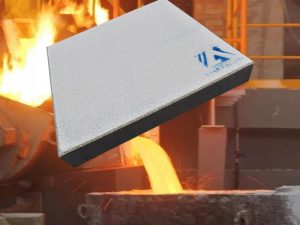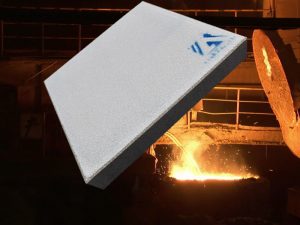In 2020, Chinese electrolytic aluminum output is 37.16 million tons
AdTech focuses on the Chinese market to help aluminum factory improve their aluminum products with degassing units, ceramic foam filters, deep bed filters, caster tips, and so on.
In 2020, the domestic electrolytic aluminum output is 37.16 million tons, the inventory changes are expected to be basically the same, the net import of primary aluminum is expected to be 1.1 million tons, and the apparent consumption will reach 38.25 million tons, a year-on-year increase of 5%. Corresponding to the performance of domestic GDP in 2020, 5% of the apparent consumption of primary aluminum is really strong. The author believes that there is the growth of regular consumption and the help of occasional consumption.
In terms of conventional consumption, the aluminum formwork used in the construction of the main building sector, which is the largest domestic use of aluminum, and the aluminum doors and windows, curtain walls, etc. used at the completion end, are expected to provide an increment of 1 million tons of aluminum; The growth in demand for aluminum is expected to be 550,000 tons and 400,000 tons respectively. Of course, the export of primary aluminum products will drop significantly in 2020, but the export of finished organic electrical products will increase significantly to make up for the lack of export of some aluminum products.
In terms of incidental consumption, the epidemic has caused a reduction in the supply of scrap aluminum and scrap aluminum suppliers have been reluctant to sell, resulting in an upside-down between the price of refined scrap aluminum and the price of primary aluminum. , the replacement of primary aluminum to scrap aluminum is about 500,000 to 550,000 tons. As one of the most important anti-epidemic materials, masks in my country have increased rapidly in the context of the global spread of the new crown epidemic. According to data from the survey company iiMedia Research, my country's mask production is expected to reach 102.5 billion in 2020, an increase of 20.5 times compared to 2019. The average aluminum consumption of the nose bridge strip of ordinary masks is about 0.3g/piece, and the average aluminum consumption of medium and high-end masks is 0.6g/piece. Based on a 6:4 pattern, the average aluminum consumption of masks is about 0.4g/piece. In 2020, the mask industry uses aluminum. The volume is expected to be 41,000 tons. In addition, the domestic flood control situation in 2020 is severe, and the demand for aluminum flood control baffles will increase, which also constitutes an occasional demand for aluminum. It should also be noted that the V-shaped reversal of aluminum prices and the replenishment of warehouses in various links of the industrial chain are difficult to assess in quantity, but they do exist and contribute to consumption.
From finished products to primary products
In response to the impact of the new crown epidemic on the economy, major central banks around the world have expanded their balance sheets, exceeding the level of the 2008 global financial crisis. Different from injecting liquidity into financial institutions during the financial crisis in 2008, this time overseas pays more attention to direct subsidies to residents and enterprises, driving overseas social sales back to pre-epidemic levels. However, due to the constraints of the epidemic, the industrial output of most overseas economies has not recovered year-on-year, which has led to strong import demand for finished products. my country has made up for this part of the output gap overseas with complete industrial facilities and strong production capacity, corresponding to The apparent domestic demand for industrial raw materials has exploded, while the export of primary products has declined significantly. From January to November 2020, the total export value of my country's import and export trade totaled 16.12 trillion yuan, a cumulative year-on-year increase of 3.65%, of which the cumulative export value of mechanical and electrical products was 9.57 trillion yuan, a cumulative year-on-year increase of 5.4%. The export volume of primary aluminum products in my country has decreased significantly. From January to November 2020, the export of unwrought aluminum and aluminum products was 4.404 million tons.
Looking forward to 2021, vaccines in economies such as the United States and the United Kingdom have already begun to be vaccinated. In the first half of this year, there is a high probability that the vaccine will be popularized, which will help the recovery of overseas industrial output. demand will pick up. In 2021, my country's exports of unwrought aluminum and aluminum products are expected to recover to the level before the epidemic. At the same time, considering that the internal and external price ratio is still at a high level, the export of aluminum products is expected to be around 5.5 million tons.
Continuation of Aluminium Increment for Completion and Construction
The aluminum used in the building plate can be roughly divided into the doors and windows at the back end of the building, the aluminum used for the curtain wall, and the aluminum used for the formwork in the construction process. The others are observed from the growth rate and penetration rate of real estate construction area.
Since 2017, the growth rate of the completed area of domestic real estate has lagged far behind the growth rate of the newly started area, and the development enterprises have lengthened the development cycle. Since June 2019, real estate development investment has paid more attention to construction and installation projects, and the completed area was once recovered. In 2020, the epidemic made the data appear a cliff in February and March, and the completed area actually turned positive in October. In 2020, the real estate completion end did provide an increase for domestic aluminum consumption. In view of the fact that the construction area continues to be transmitted to the completion, it is expected that the growth rate of the completed area will cross the zero axis, and the increase in demand for aluminum is expected to be 300,000 tons.
In 2017, the old improvement entered the pilot period. In April 2020, the Politburo meeting proposed to implement the renovation of old communities as a measure to expand effective investment. The “14th Five-Year Plan” real estate renovation policy has shifted from shed reform to old reform. According to estimates by GF Securities, the potential stock size of old reform will reach 4.82 billion square meters, 5.29 billion square meters and 6.59 billion square meters respectively in 2020-2022. The specific content of the old renovation generally includes the building body, infrastructure, community environment, public service facilities, etc. The main industrial materials involved are steel, concrete, pipes, mortar, coatings, cables, valves, waterproofing membranes, plastic steel windows, Sand, cement, building bricks, wood, insulation boards, etc. Although the old renovation carried out at the national level does not directly involve the demand for aluminum, the advancement of the old renovation project will lead to the demand for replacement of doors and windows by households, which will lead to an increase in the demand for some aluminum consumption.
In May 2020, the "Guiding Opinions on Promoting the Reduction of Construction Waste" issued by the Ministry of Housing and Urban-Rural Development pointed out that the reuse rate of temporary facilities and turnover materials should be improved, and the promotion of turnover materials such as aluminum formwork should be encouraged. From the central to the local level, policies have promoted the full release of the development potential of aluminum formwork and accelerated the promotion of the application of aluminum formwork. According to the statistics of China Formwork and Scaffolding Association, as of the end of August 2020, the national aluminum alloy formwork market has about 78 million square meters (including non-standard formwork). The scale is about 2 million tons. According to the survey of related enterprises, the growth rate of the market is expected to be around 15% next year, and the demand for aluminum will increase by about 300,000 tons.
The increase of photovoltaic aluminum is 500,000 to 600,000 tons
The strategic status of renewable energy planning in various countries has been improved. For example, the European Union has raised its greenhouse gas emission reduction target from 40% to 55% in 2030; the election of Biden in the United States has strengthened support for new energy policies; my country strives to achieve carbon emissions by 2030. Feng, to achieve carbon neutrality before 2060, put forward new requirements for the transformation of energy structure and structural reform of the power supply side, and the proportion of low-emission or even zero-emission non-fossil energy (hydropower, nuclear power, photovoltaics, wind power, biomass) applications There is still a need for a substantial increase, and the investment income of photovoltaic projects with steadily declining power generation costs will become more attractive, and the demand for photovoltaic installations will show an accelerated trend in the future.
In 2020, the impact of the epidemic on overseas large-scale power plants under construction is relatively limited, and the impact on distributed projects such as European and American users is also quickly digested. It is estimated that 15GW~20GW of installation projects will be postponed across the year. It is estimated that the global installed capacity of photovoltaics will reach 118GW in 2020, and the installation will be postponed. To lay the foundation for next year's demand recovery, it is expected that the global photovoltaic installed capacity will be around 155GW~190GW in 2021~2022.
More than half of overseas photovoltaic modules are provided by my country's exports. According to Solarzoom's estimates, from January to September 2020, my country's photovoltaic module exports reached 53GW to 55GW, compared with 52.7GW in the same period in 2019. It is expected that the annual export scale is expected to reach 75GW, compared with In 2019, the export scale of 67GW increased by about 8GW. From an incremental point of view, the newly installed overseas capacity in 2021 will increase by about 20GW compared with 2020. Based on 70% of the overseas market, it is estimated that the export share of components will be 14GW, and it is expected to provide an increase of 280,000 tons of aluminum.
Domestically, the photovoltaic industry has officially entered the transition period from subsidy to parity from 2019 to 2020 after the last major test of the "531" policy in 2018. The market-oriented competition and online form determine the project's kWh subsidy intensity and average kWh intensity. From 0.06~0.07 yuan/kWh in 2019 to 0.03~0.04 yuan/kWh in 2020, a smooth transition to subsidy-free parity in 2021 is basically achieved. In 2020, the reserve scale of photovoltaic power generation parity projects will be about 50GW, which will provide strong support for the installed capacity in 2021. From January to September 2020, the scale of newly installed photovoltaic capacity in China was 18.7%, a year-on-year increase of 16.9%. In the fourth quarter of last year, due to the bottleneck of photovoltaic glass supply and the shortage of auxiliary materials, the rush to install may be slightly lower than expected. In 2020, the installed capacity is expected to reach 38GW. With the centralized installation of affordable projects in 2021, the domestic photovoltaic installed capacity is expected to reach 50GW~55GW, providing an incremental demand of 240,000~340,000 tons of aluminum. In 2022, it will fully enter the era of parity, and the installed capacity may reach 60GW~65GW.
The growth rate of aluminum for urban rail has slowed down
Intercity high-speed railway and urban rail transit are the main directions of "new infrastructure" in 2020. The growth of urban rail transit operating kilometers has increased significantly, driving the growth rate of urban rail operating vehicles to increase significantly compared with 2016 to 2019, which constitutes the growth of aluminum consumption in 2020. one of the main sectors. In 2021, the national urban rail transit system will usher in a new round of planning approval, but combined with the project approval and planning, it is expected that the growth rate of urban rail transit operating kilometers from 2021 to 2025 will face a downward adjustment, and the corresponding growth rate of operating vehicle demand will also be reduced accordingly. It is expected that the number of operating vehicles will increase to 55,000 in 2020, and the annual supply of vehicles will be 14,000, an increase of 7,000 compared with the 6,986 vehicles supplied in 2019. Usually, about 10 tons of aluminum alloy are used in each carriage, and the increase in aluminum consumption is about 560,000 tons. In the context of the high base in 2020, the growth rate in 2021 is facing a decline. The annual supply is expected to be 10,500 units, a decrease of 3,500 units from 2020, and the demand for aluminum will drop by 300,000 tons.
From January to November 2020, the sales volume of automobiles in my country was 22.47 million, a year-on-year decrease of 2.77%. Among them, the sales of new energy vehicles was 1.109 million tons, a year-on-year increase of 6.34%. The China Association of Automobile Manufacturers predicts that in 2020, the total sales of automobiles will reach 25.3 million units, a year-on-year decrease of about 2%. Among them, the sales of passenger vehicles are expected to be 20.2 million units, a year-on-year decrease of about 6%; the sales of commercial vehicles are 5.1 million units, a year-on-year increase. About 18%; sales of new energy vehicles were 1.3 million, a year-on-year increase of about 8%. It is estimated that the total vehicle sales in 2021 are expected to reach 26.3 million units, a year-on-year increase of about 4%. Among them, the sales of passenger vehicles are 21.7 million units, a year-on-year increase of about 7.5%; the sales of commercial vehicles are 4.6 million units, a year-on-year decrease of about 10%; new energy vehicles The sales volume was 1.8 million, a year-on-year increase of about 40%. In the next five years, China's auto sales are likely to achieve steady growth. China's car sales will reach 30 million by 2025. In 2021, aluminum consumption in the automotive market is expected to increase by 150,000 tons.
Aluminium demand for grid use may shrink
The main use of aluminum in the power grid sector is steel-cored aluminum stranded wire for high-voltage power transmission and transformation. High-voltage power transmission and transformation projects are subject to national planning and approval. High-voltage power transmission and transformation is a carrier of "new infrastructure". In 2020, the State Grid is promoting Jinshang hydropower transmission, Longdong-Shandong, Hami-Chongqing, three UHV lines to be included in the power plan, and it is expected to be approved for implementation in 2021. . In the long run, the local development and Reform Commission plans to promote 3 UHV lines to be included in the "14th Five-Year Plan" power plan: Qinghai Haixizhou delivery, Harbin delivery, Jilin delivery, the number is far from the 9 lines approved in 2018. Far. Since no large-scale power transmission and transformation projects have been approved in 2020, the demand for delivery tends to decline as the preliminary projects come to an end. Judging from the bidding data of the State Grid, the delivery of aluminum-related products in the power grid in 2020 has fallen sharply, and the delivery volume has decreased by 650,000 tons compared with 2019. If the new high-voltage power transmission and transformation project is not approved in 2021, the demand for aluminum in this sector is expected to continue to decline by 500,000 tons throughout the year.
In 2020, the apparent consumption of domestic electrolytic aluminum is 38.25 million tons, a year-on-year increase of 5%, the domestic output gap is about 1.1 million tons, and the overseas primary aluminum imports are supplemented by 1.1 million tons, and the carry-over inventory at the end of the year is maintained at 600,000 tons. Occasional consumption and regular consumption go hand in hand, driving the unexpected growth of domestic primary aluminum consumption in 2020.
In 2021, considering the non-replicability of occasional consumption growth and the change in the incremental structure of electrolytic aluminum consumption, the domestic primary aluminum consumption growth will be lowered to 3% to 3.5%, corresponding to a consumption increase of 1.1 million to 1.35 million tons, and the consumption is 39.4 million to 39.59 million tons. The main sectors contributed to the increase of 650,000 tons of primary product exports, the increase of 600,000 tons of construction, the increase of 550,000 tons of photovoltaics, the decrease of 150,000 tons of delivery and the decrease of 500,000 tons of power grids.




